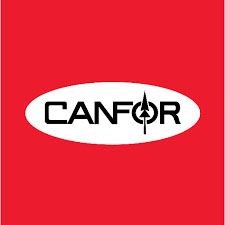A few years ago I was involved with a small team of people in my community of Prince George that gathered together with the sole goal of improving the air quality.
I was spurred on by a letter to the newspaper by a woman unknown to me, named Betty Bekkering, complaining about the local air quality in our community. I called Bekkering and together we organized a meeting of like-minded people anxious to address this concern.
This initial meeting marked the beginning of an organization that grew to 1,200 people called PACHA - People's Action Committee for Healthy Air whose goal was to work with industry, government and politicians to find a solution to Prince George's 50-year-old pollution plague.
At first Industry tried to tell us that it wasn't their problem. Government said that the air issues were caused by road dust.
Even politicians dismissed us. But our group persisted with hard work by the likes of Jo Graber, Mary Macdonald and Sergio Patitucci just to name a few.
But then something changed. Our group started testing the air independently and our suspicions proved true. Most of the pollution in our community was coming from industry, not road dust or fireplaces. Not only that, support for PACHA and clean air was mounting monthly with support from news coverage by the Prince George Citizen and other local media.
We approached many different industrial companies in Prince George but our focus was the pulp mills. For decades these mills had been providing good paying jobs in the area and politicians had been reluctant to speak out against their pollution.
In our opinion, government agencies had been handcuffed in their ability to require upgrades that would make a difference.
However with the growing support of PACHA and our media coverage, things were changing, and the mills owned by Canfor started listening.
It took some convincing, but Canfor got it right. Our meetings with the company were always polite and often led by Martin Pudlas, the operations manager at the mills. At first they tried to sway us their way of thinking but as our independent research and evidence grew, and our pressure mounted, Canfor got on board.
Canfor started looking for ways to reduce emissions and odour. After a fire at one of their mills, Canfor upgraded systems substantially in order to improve the community air quality. When government funds became available for environmental improvements, they tied changes to air quality.
When they were putting their retained earnings back into capital improvements, they included mill improvements that reduced emissions. Canfor took their challenges and commitment seriously in the years that followed.
Today, after years of hard work by industry, government and politicians, the air in Prince George has improved with a reduction in odour by 60 per cent and particulate by over 40 per cent. Canfor benefited because the upgrades effected their bottom line in a positive manner and their shareholders were happy.
Yes, there are days when it does still smell. Yes, industry and Canfor probably could do more.
But what did Canfor do that every business should consider?
Canfor engaged with disenchanted stakeholders in a positive manner. Often when faced with confrontational opponents many businesses and owners become combative and quarrelsome - Canfor didn't.
Canfor admitted their weaknesses. At first Canfor executives told us the age old story that the pollution was caused by someone else. However as our pressure grew, they had frank conversations with us about the issues and the challenges they faced. This changed the dynamics in a positive manner. So often as business owners we want to protect our image so that we and remain in control, so we do everything we can to portray a strong image.
This doesn't allow us to consider other options that might be outside the corporate mindset.
Canfor creatively found unique solutions to complex problems. Because they were open to doing what was right while at the same time protecting their investors' money, Canfor's executive team was able to be creative in getting results that would achieve their goals. They also used the community pressure to partner with government which allowed them to use resources to realize potential health improvements in the community.
When communities, government and industry work together in an atmosphere that allows for dialogue as well as healthy conflict and exchange of ideas, results can be beneficial to all parties.
If there were more win-win solutions presented in environmental and social situations where business is involved, concerns could be more rapidly resolved.
Let's make it a habit to think out of the box for approaches that will encourage companies to engage their disenchanted stakeholders and get positive results to complex problems.
Dave Fuller, MBA, is a business strategist and coach. He is the author of Profit yourself Healthy and a troublemaker. Email dave@profityourselfhealthy with your questions and concerns.



